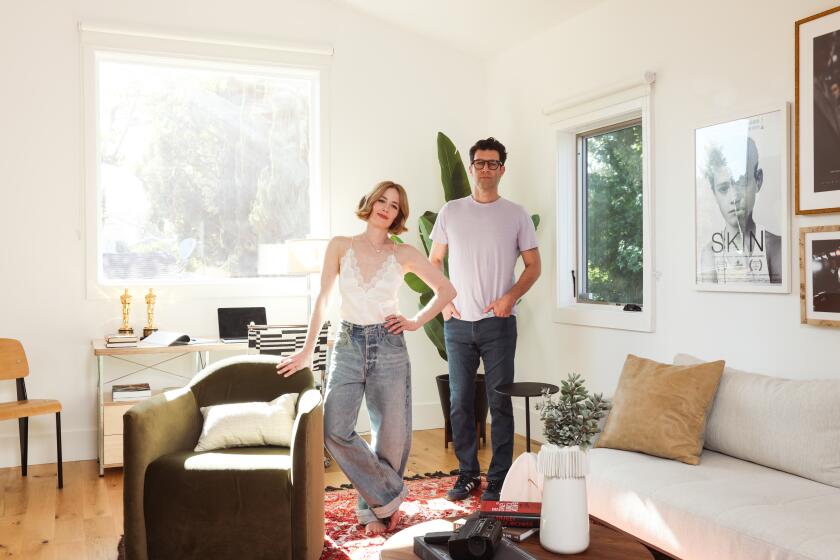Mission Tiles Link the Past And Present
Isabel Piczek is familiar with every detail of Pope John Paul II’s face. And she knows things about Father Junipero Serra that you wouldn’t find in an average encyclopedia.
For weeks, Piczek closely studied a photograph of the Pope’s face and read exhaustively about the founder of the first nine California missions, noting his small stature and lame leg. Then, and only then, did the Hungarian-born artist feel confident that she could design a large mosaic commemorating the Pope’s visit Wednesday to the San Fernando Mission.
The mosaic, composed of 35 ceramic tiles, depicts Serra welcoming the Pope to the mission with open arms. The artwork was commissioned by the mission’s rector, Msgr. Francis J. Weber.
Installed above the north entrance to the mission church, it also features five of the mission’s 21 famous arches, a typical mission bell with the date “1987” printed on it and a Shetland sheepdog.
“That’s the mascot of the mission, Msgr. Weber’s favorite dog, smallPAX,” Piczek said. “I welcomed the idea of including him because he adds warmth and makes it more than an official portrait of the first time a pontiff ever visited a California mission.”
Working closely with Weber, Piczek designed the 7-by-5-foot mosaic and chose the red, yellow, beige and white color scheme. She drew three designs before the final one was selected. After Piczek copied the design onto the tiles, ceramist Mary Jane Matoza fired them in a kiln.
“It wasn’t an easy task to minimize the Pope’s face to a few lines with no shading,” Piczek said. “I had to simplify and simplify and simplify until just the essentials remained.”
Although Piczek has been creating monumental works for churches and synagogues since she was a girl, including a seven-story mural for the Guardian Angel Cathedral in Las Vegas, she said she still got excited about the mission project.
“It was so interesting to read Father Serra’s life story,” said Piczek, 47, a devout Catholic. “I find him even more heroic now that I know he was only about 5 feet tall and lame.”
Serra, who is said to have walked between 15 and 20 miles per day, was bitten by a mosquito or chigger shortly after founding the San Diego Mission in 1769, according to a biography written by Weber. The bite became infected and left a wound that plagued Serra the rest of his life, according to the book.
Escaped From Hungary
Piczek has had her own ordeals to endure.
Seeking freedom for their religious art, she and her sister, Edith, escaped from Hungary in the early 1950s. Young as they were, the teen-age girls were able to make their way across Europe from one monastery to another by painting for the monks. When Isabel was 13, they arrived in Rome, where they were commissioned by the Vatican to paint a huge fresco mural in the famous Pontifical Biblical Institute.
Since the sisters came to the United States in 1957, Piczek said, they have worked “nearly 365 days a year” creating spiritual art for synagogues and churches, many of which are in Southern California. Several of Piczek’s works adorn the San Fernando Mission, including a series of six mosaics depicting the history of the Archdiocese of Los Angeles and a large mosaic of Our Lady of the Archives.
One of Piczek’s favorites, however, is a small mosaic set into the east wall of the mission near where the ancestors of the mission’s original cats are said to roam. The mission’s first priests kept cats to keep their laps warm and as rat catchers, according to mission lore. Barely noticeable behind a latticework of overhanging olive tree branches, the mosaic depicts a fat cat sitting back on its haunches.
More to Read
Sign up for Essential California
The most important California stories and recommendations in your inbox every morning.
You may occasionally receive promotional content from the Los Angeles Times.










